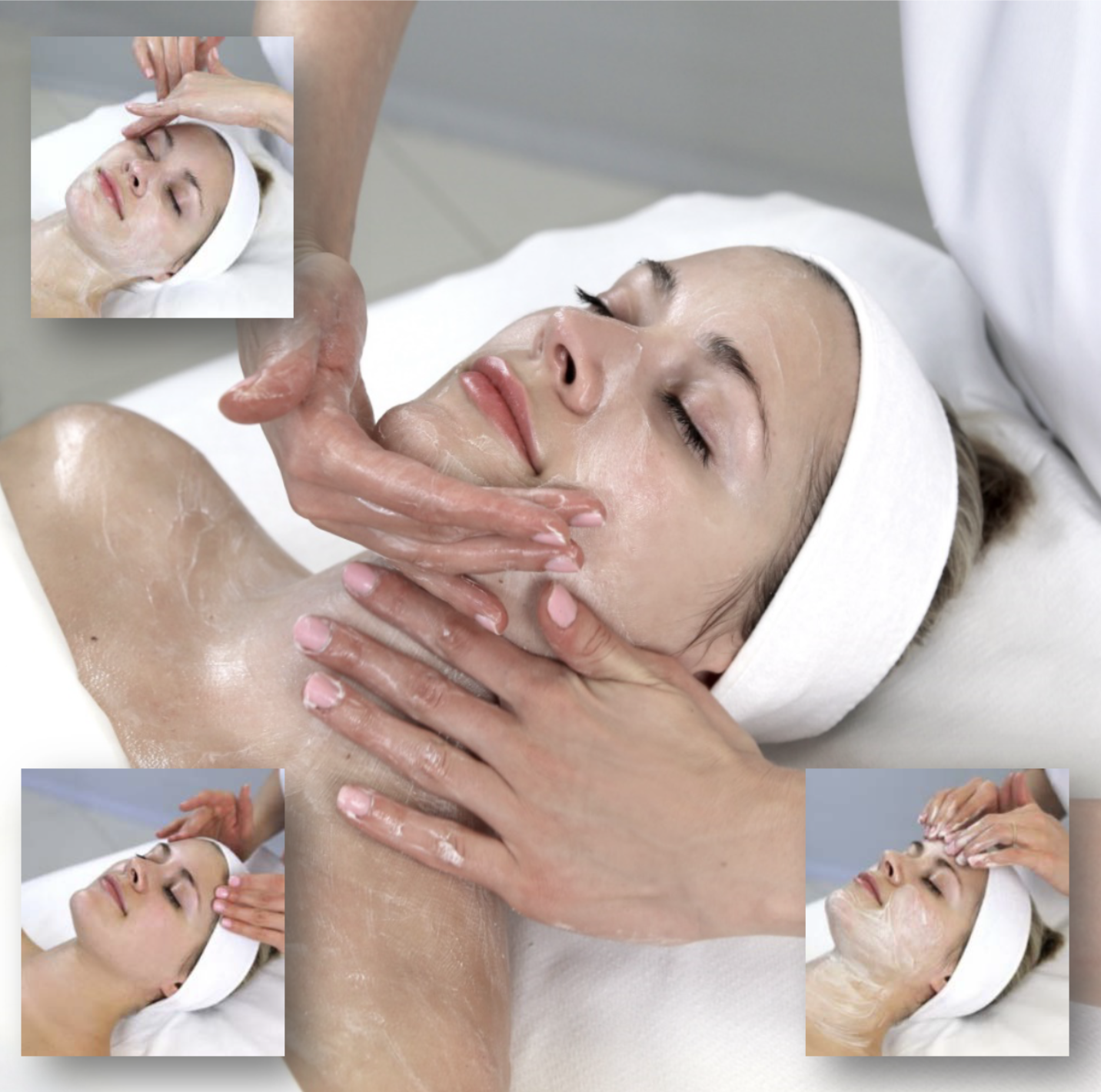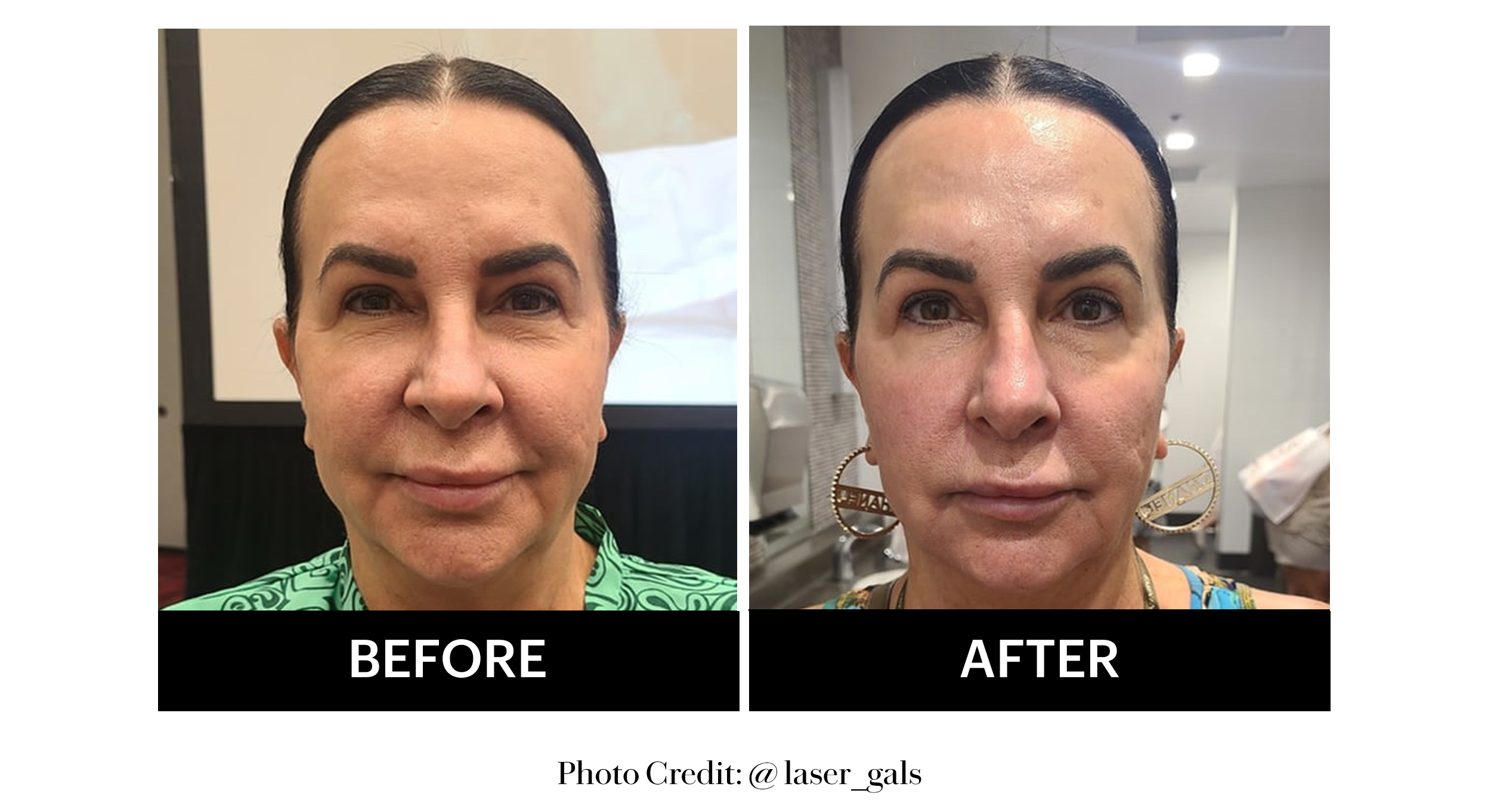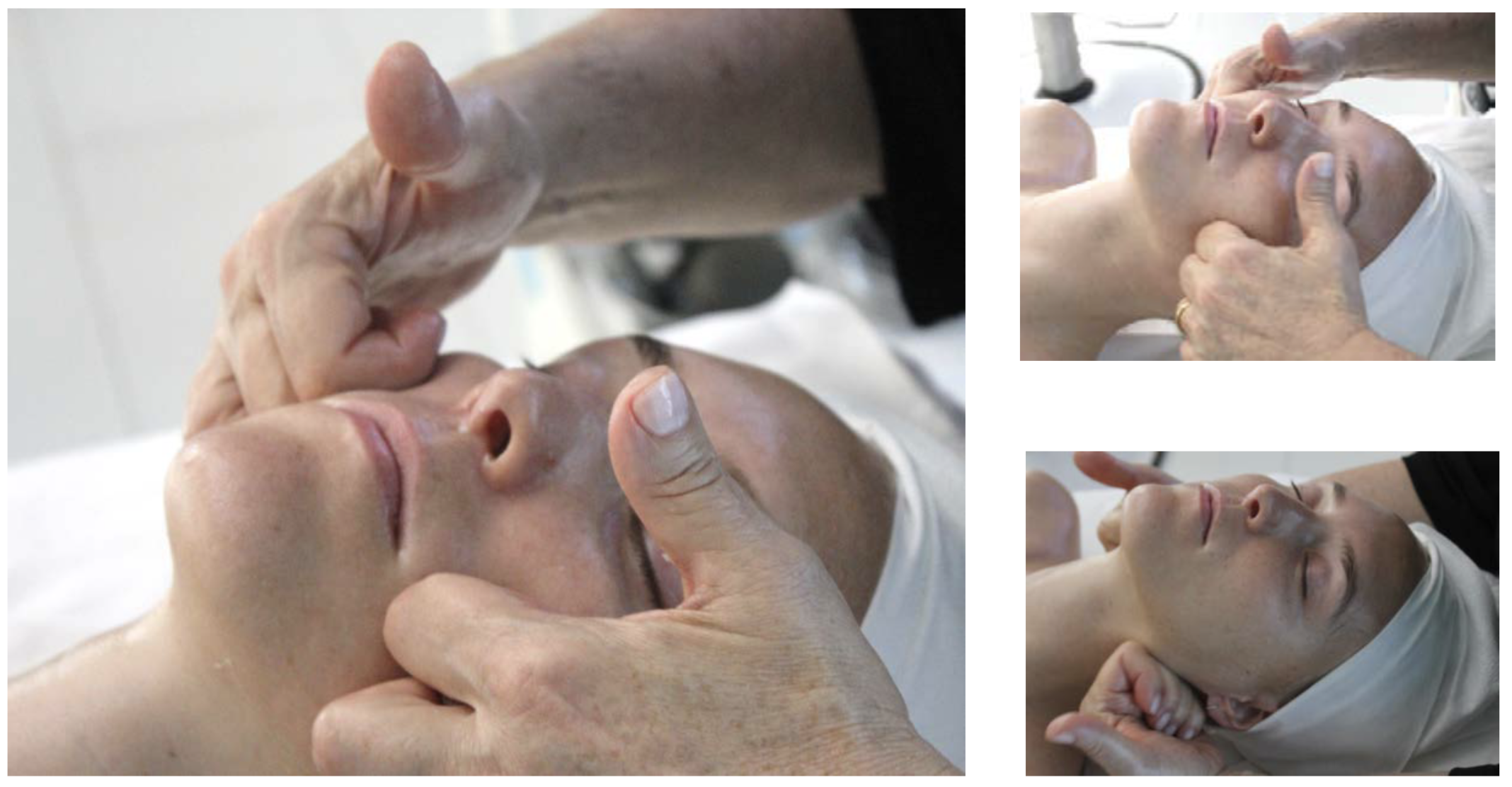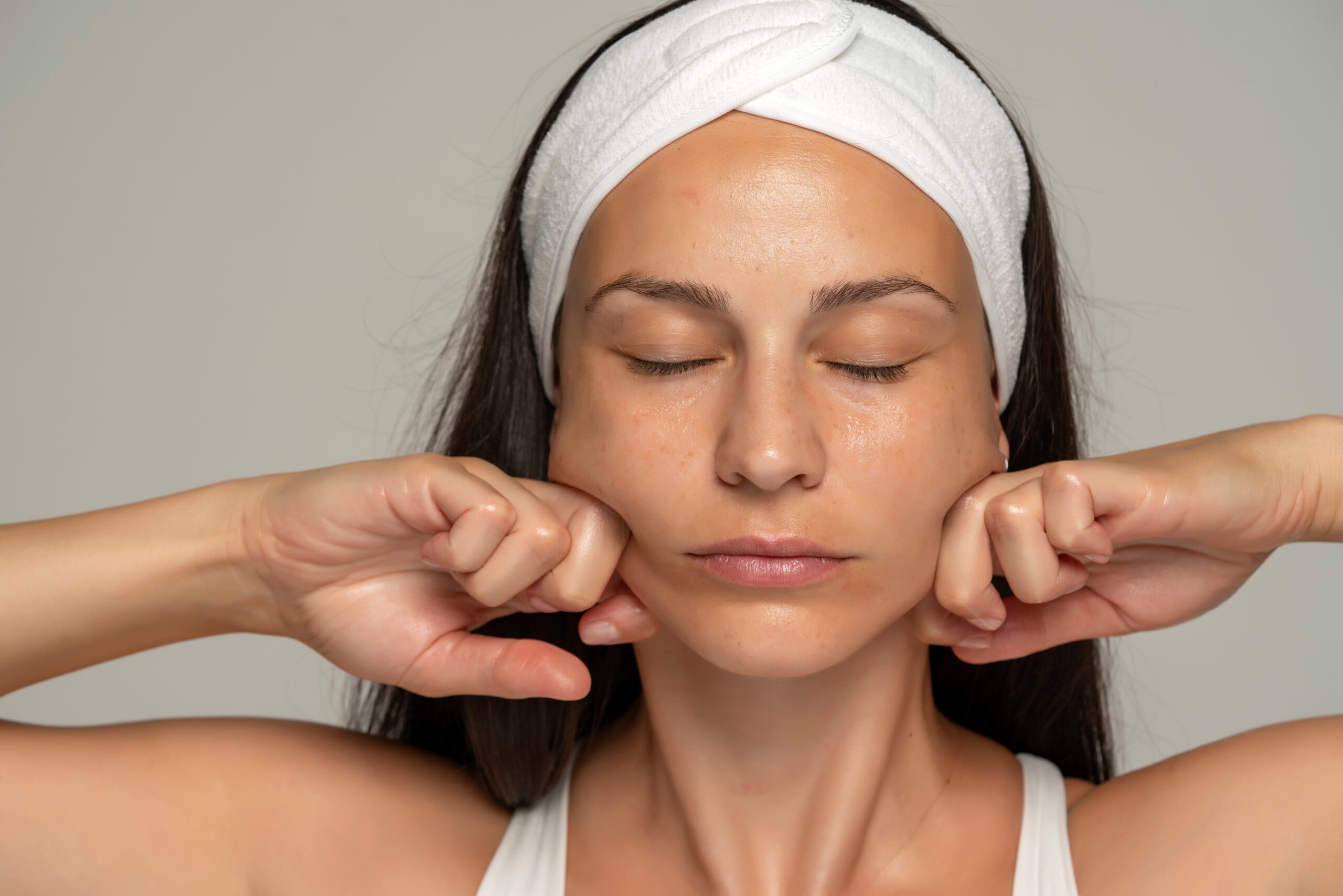I hope you had a chance to join me in the recent Master Class on the Ultimate Seaweed Facial with Manual Lymphatic Drainage (MLD) Massage. Manual Lymphatic Drainage massage, used in conjunction with proven results of sustainably-harvested seaweed-based treatments such as the Four-Layer Facial®, provides amazing results that your clients will be able to see and feel. I recently wrote an article for Skin Deep, the magazine for Associated Skin Care Professionals (ASCP) where I provided information about MLD, as well as other massage techniques and devices that you can incorporate into your treatments for enhanced benefits and great skin care results. Here, I’ve expanded on this information to include important resources to help you provide your clients with the most advanced and beneficial skin care treatments.
Facial massage techniques have been used for centuries to help improve the appearance of the skin. Today, facial massage is incorporating both ancient practices such as Kansa Wand (click here for more information on performing a full massage with this device) with high tech devices such as a hand-held LED device to create even better results fast. Lymphatic Drainage Massage (LDM) is also being incorporated into facial treatments to help improve skin appearance.
There is now extensive research on the physical and psychological benefits of massage therapy, including amelioration of chronic pain such as lower back pain, neck pain, headaches and migraines, shoulder pain, arthritis, knee pain, carpal tunnel syndrome, cancer-related fatigue and pain, fibromyalgia, and psychological and physical benefits such as sleep management, reduction in anxiety, depression and assistance with long-term illnesses such as Parkinson’s disease and Multiple Sclerosis.
The newest research has found benefits for hypertension, neo-natal and pediatric care, spinal cord injury and Long COVID Syndrome. A recently published study from the Cleveland Clinic shows that integrative therapies that include massage therapy, can improve the physical, mental and social health for patients with chronic, non-cancer related pain without increased use of opioid medications.
When it comes to facial massage, in addition to psychological benefits, new research is finding that new techniques, such as CT scans, are showing some initial promise in quantifying actual morphological benefits to the skin. “In addition to providing mental satisfaction, relaxation, and improvements in skin texture, beauty treatments such as facial massages also result in morphological changes in the face, such as improvements in facial sagging and lifting effects on the cheeks. The soft tissues, including the superficial musculoaponeurotic system (SMAS) and subcutaneous adipose tissue, are distributed subcutaneously. Facial massage may change their morphology.”

Massage during facials benefits the client’s skin in many ways. Using massage helps cleanse the skin of impurities and soften sebum. It also helps manually slough off dead skin cells. Studies have found it can have psychological benefits, as well, however, with an average decrease of 31% in cortisol levels, the chemical your body releases when you are stressed. Massage also has been noted to increase levels of dopamine and serotonin, neurotransmitters that are responsible for feelings of happiness and self-worth.
One study found that using a massage device can help increase the benefits of a moisturizing cream, to help increase anti-aging benefits: “As compared to untreated skin, the massaging procedure clearly led to higher rates of expression, in particular for decorin, fibrillin, tropoelastin, and procollagen. The mechanical stimulus thus evoked an anti-aging response.” Massage has also been found to help reduce pain and inflammation, stimulate blood and lymph circulation, improves overall metabolism and activates sluggish skin.
Massage is defined as a manual or mechanical manipulation by rubbing, kneading, or other methods that stimulate metabolism and circulation. When the body senses touch, reflex receptors respond by increasing blood and lymph flow. The central nervous system is affected, resulting in a state of relaxation. It also helps provide clients with a glowing, healthy looking complexion.
Why Study Facial Massage?
Estheticians should have a thorough knowledge of facial massage because it is a foundational service that provides skin benefits, enhances product effectiveness, and provides relaxation. Learning and practicing to perfect your technique will allow you to provide your clients with superior results and create a loyal clientele. When learning massage technique, there are four concepts to keep in mind:
- You must be able to explain the physiological and psychological benefits of massage to the client.
- Massage is a key step in the facial process, and is a key skill to master to become a successful esthetician.
- Knowing the proper techniques and the contraindications for massage is important for client safety.
- A thorough knowledge of muscles, nerves, connective tissues, and blood vessels is vital to performing a correct massage. For a thorough review of the muscles and skeletal structure of the face, there is a free course on LydiaSarfati.com.
The Benefits of Massage
Massage during facials benefits the client in many ways. Stimulating muscle and nerve motor points will both contract muscles and relax the client. Therapeutic effects on the nervous and muscular system can be parallel because the epidermis and the brain have a common origin, both developing from the embryonic neuro-ectoderm that coat the developing embryo. The epidermis has also retained neuro-mechanisms that are associated with the brain. These epidermal neuro-receptors provide a platform for sensory capabilities via physical receptors.

The Five Major Facial Massage Movements
To administer a complete and effective facial massage, one should employ five forms of hand manipulation. (Click here to see and learn about The Lydia Sarfati Classic European Massage Method step by step) These massage movements include effleurage, petrissage, friction, tapotement, and vibration.
This style of massage should involve a rhythmic movement to the skin and tissues and as such, usually requires a massage medium that will allow enough slip to complete the massage comfortably and successfully.
Effleurage (consists of light stroking movement applied with the fingers (digital) and palms (palmar) in a slow and rhythmic manner.
Petrissage is a compression technique, which includes kneading, squeezing and pinching. This affects the deeper muscle tissue of the face. The pressure should be light but firm and the movements should be rhythmic.
Tapotement is a percussive stroke in which the fingertips strike the skin in rapid succession. This technique improves circulation by stimulating the diffusion of the capillary network.
Friction is an invigorating rubbing technique, stimulating circulation and glandular activity. It can be performed in a circular manner or a criss-cross manner with the fingers working in opposition to each other.
Vibration is a highly stimulating movement and should be used very sparingly. This is a shaking movement and is performed over wide areas.
To keep the relaxing flow and connection, do not remove your hands from the client’s face once you have made contact with the skin. Unbroken contact feels better and gives the client a sense of physical continuity that is very soothing and calming. Should it become necessary to lift the hands from the client’s face, feather them off (slowing down the movement is often called feathering), then gently replace them with feather-like movements. When coming back to the face, gently make contact on the side of the face or top of the head to avoid startling the client. Keep one hand on the client’s body at all times if it is necessary to take one hand away (if you need to apply more product, for example). To aid in relaxation, choose instrumental music with a slow, even tempo.

Manual Lymphatic Drainage Massage
Manual Lymphatic Drainage (MLD) massage is becoming even more important in the esthetician’s repertoire to create a truly holistic facial treatment. Hippocrates, in the 5th century BCE, was one of the first doctors to mention the lymphatic system.
The lymphatic system is an extensive network of vessels, nodes, and ducts that pass through almost all bodily tissues. It is made up of a series of lymph vessels carrying lymph, a colorless plasma-like fluid that bathes tissue, and removes wastes and foreign bodies from interstitial spaces between cells. The functions of the lymphatic system are important and extend throughout the body, responsible for purifying and removing toxins from the body. Lymph organs are found in the bone marrow, thymus, spleen, tonsils and adenoids and appendix, among others. The important structures of the lymphatic system include lymph fluid, vessels and nodes.
Lymph fluid is the clear fluid that travels through the lymphatic system and carries cells that help fight infections and other diseases. Lymphatic vessels, unlike blood vessels, only carry fluid away from the tissues. The smallest lymphatic vessels are the lymph capillaries. Lymph nodes are the kidney-shaped organs of the lymphatic system and the adaptive immune system.
There are hundreds of lymph nodes found throughout the body that filter substances that travel through the lymphatic system, and contain lymphocytes (white blood cells) that help the body fight infection and disease.
The lymphatic system works with blood stream. 20 liters of plasma flow through your body’s arteries and smaller arteriole blood vessels and capillaries every day, transporting nutrients to the body’s cells and tissues and collecting the waste products. About three liters seep through the capillaries and into your body’s tissues. The lymphatic system collects this excess fluid, now called lymph. The lymphatic system also runs in one direction only, from tips of toes in fingers upwards towards the heart and neck.
The Lymphatic system is important because this transport of excess toxins helps protect the body from illness-causing invaders and production of immune cells such as lymphocytes, monocytes, and antibody producing cells called plasma cells. Blockages, diseases or infections can affect your lymphatic system’s function. The swelling can be seen under the eyes, and on nose, face, hands, arms, legs and feet.

In the 1930’s, while working with patients with chronic sinusitis and other immune disorders, Drs. Emil Vodder and Estrid Vodder in the 1930s noticed that all these patients he treated had swollen lymph nodes. As a result, he developed light, rhythmic hand movements to promote lymphatic fluid drainage. MLD has been incorporated into medical esthetics prior and after plastic surgery. Prior to surgery, estheticians find that this helps prepare the body by advancing the healing process by stimulating the immune system while draining excess fluids and toxins. After surgery, MLD can help with the healing process, reduce bruising/swelling, remove cellular waste to help reduce inflammation and help reduce fibrotic scarring.
Physiological benefit of MLD include reduction in stress, sleep disorder, rosacea, spider veins, chronic eczema and psoriasis, scars, hematomas and facial edema, post-surgery edema, lymphedema and chronic inflammation.
By increasing circulation to the skin, the esthetic benefits of lymphatic drainage massage include improving the appearance of dullness, decreasing puffiness, helping reduce the appearance of acne and fine lines and wrinkles. Contraindications of MLD massage include heart condition, low blood pressure, kidney failure, blood clots, infection, asthma or bronchitis, cancer malignancy, pregnancy, thyroid hyperactivity and toothache.
The level of pressure used during MLD should be light. This can be thought of as a “feather touch.” The manual maneuvers must also be gentle enough so as not to increase filtration from the blood capillaries. The motions for drainage should be gentle, steady and harmonious. Always work downwards and from the middle of the face toward the lymph nodes around the neck and ears.
Dr. Vodder’s Manual Lymphatic Drainage consists of the several movements:
- Stationary Circles: These movements are primarily applied to the neck and the face. This technique involves continuous spiral strokes, typically applied over the face, neck, and lymph nodes.
- Scoop Technique: This movement is performed with one hand, or with two hands alternating, and is recommended for legs and arms.
- Pump Technique: This movement is performed with one hand or two hands, alternating or together, generally applied with palms facing down. This technique involves making oval strokes with the fingers and thumbs to encourage lymphatic flow and is recommended for face, neck and shoulders.
- Rotary Technique movement: This movement is always performed with two hands together or alternating. Hand is relaxed and flat on the skin, fingers together and thumb open at right angle to index finger, stretching the skin forward in the direction of lymph flow. It is recommended for neck, shoulders and chest area.
Massage Aids:
Emulsions and creams, oils, serums and balms can be used during massage to augment the skin care benefits of the treatment. When using devices, sheet masks can first be applied to the skin, with a massage with a device performed over them. This is particularly beneficial when using a LED device. Look for products and sheet masks that that contain ingredients that are both beneficial to the skin and complement the holistic massage treatment.
These include:
- Laminaria Digitata and Ascophyllum Nodosum: These seaweeds have been shown to have the greatest bio-affinity to the human body, its chemical makeup close to the elements found in human plasma. These particular seaweeds are a source of many important nutrients, including multiple vitamins, minerals and amino acids. They also contain polyunsaturated fatty acids, enzymes and bioactive peptides. Among marine resources, it is also one of the richest sources of natural antioxidants such as phlorotannins, sulfated polysaccharides, fucosterol and fucoxanthins. These Seaweeds are found in most of the Repêchage products and professional treatments, including the iconic Four-Layer Facial®, in C-Serum® Seaweed Filtrate and Hydro-Complex® PFS Moisturizing Cream, the first two layers of the Four-Layer Facial®, and in the Vita Cura® Gold Collection.
- Oxidized Glutathione: A tripeptide composed of glutamic acid, cysteine, and glycine found naturally within the skin that plays an important role in preventing oxidative damage. This important ingredient is found in the Biolight® Brightening Sheet Mask.
- Chios Mastiha (Mastic) Oil: From the island of Chios Greece, this extract is characterized by a balsam like odor and has been used in Greece for centuries. Chios mastic oil (CMO), the essential oil derived from Pistacia lentiscus has generated considerable interest because of its beneficial properties. This ingredient is found in the Hydra Dew Pure™ Facial Essence Mist, the Hydra Dew Pure™ Oil and the Hydra Dew Pure™ Elixir Balm, and is known to help strengthen the appearance of the skin barrier, to instantly help reduce dryness, while plumping the skin to provide lasting comfort.

Massage Tools and Devices:
- Silver Ball Massager: A Silver Ball Massager is made of high quality 316 grade stainless steel. It is perfect as a massage tool for sensitive skin, and can be used warm to help alleviate the lymph flow. Its benefits include helping to calm the appearance of skin irritation and redness.
- Kansa Wands: This tool, used in Ayruvedic medicine for thousands of years, has a wooden, hand-carved handle that makes using moderate pressure, delicate stroking or rapid friction easy on the face, shoulders, and neck areas. Its cap is crafted from a metal alloy blend of pure copper and tin. Benefits of using this tool include revitalization of face, shoulder and neck muscles, gentle “lifting” of the appearance of facial skin, and reduction in face pain and tension.
- LED Tightening Machine: LED (Light Emitting Diode) technology is a non-invasive alternative to costly machines. Painless and requiring no recovery time, this state-of-the-art device is beneficial for all skin types and is suitable for the eye contour area, face, neck and body. Each LED wavelength or color of light provides a unique benefit to the skin. LED treatments can minimize the look of fine lines and wrinkles, help reduce the appearance of dark spots and the visible appearance of sun damage and stretch marks, and reduce the appearance of redness and irritation from aggressive skin treatments as well as help improve the appearance of oily, problem skin.
Understanding the proper application and techniques in facial massage, as well as incorporating MLD, and facial massage devices, can create a 360° holistic wellness experience for your clients during a facial. For additional information on educational courses in massage, see LydiaSarfati.com as well as The Book of Skincare Science and Protocols.
